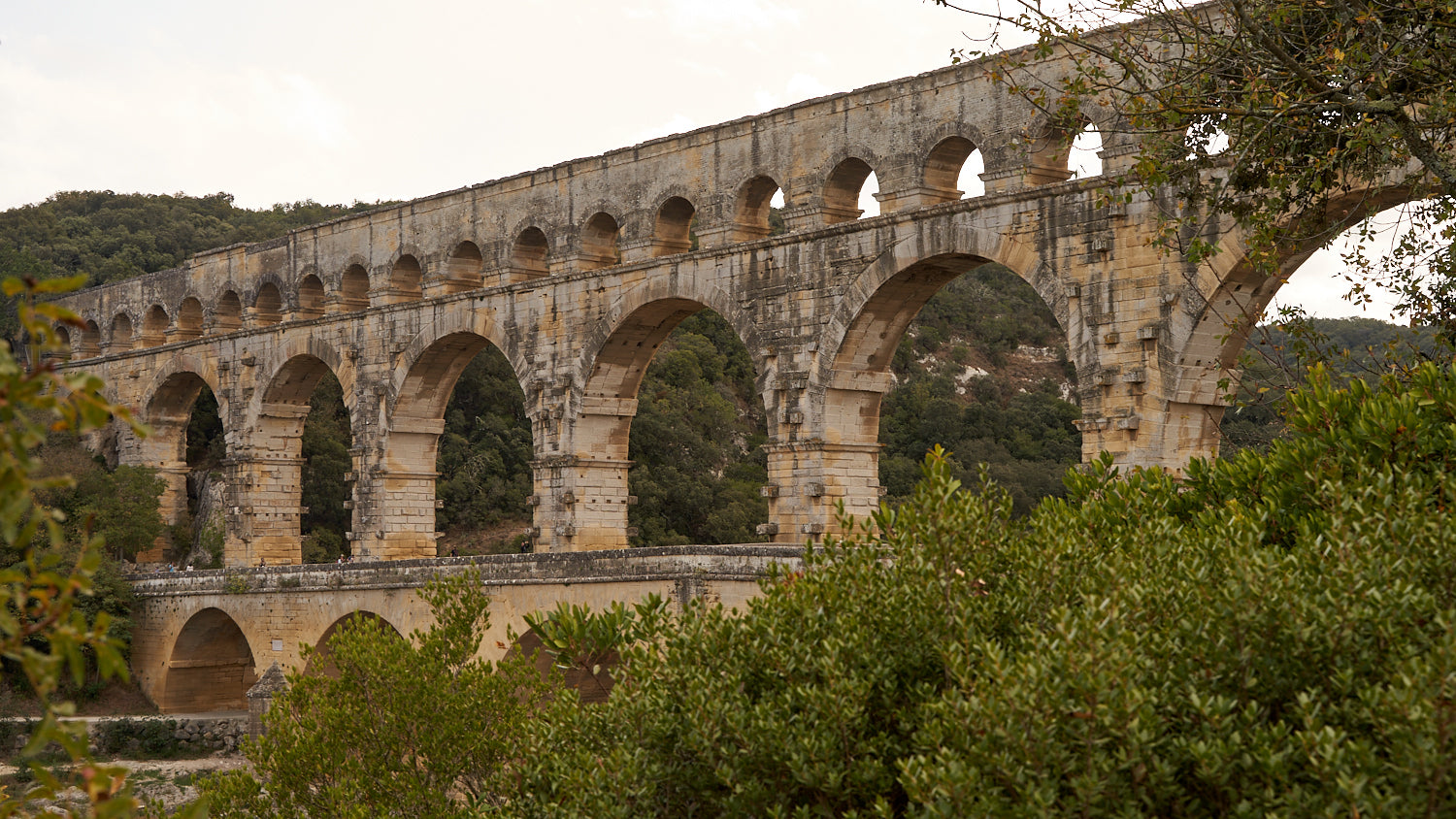
The Pont du Gard is a Roman aqueduct constructed in the middle of the 1st century AD to bring water to Nîmes. The bridge was built using Shelly limestone ("Pierre de Vers”) and stands over 150 feet high and 900 feet long. It is the highest Roman aqueduct bridge standing. The aqueduct route to Nîmes was a winding 50 kilometer transit (bringing 40,000 cubic meters of water per day - a 27-hour journey). The bridge and water source’s location was at a slightly higher elevation than Nîmes and allowed a steady flow of water.

Even after the Roman Empire fell, the Pont du Gard remained in tact, as it was used as a toll bridge. During the Middle Ages, local lords would require travelers to pay in order to cross the river. Some damage occurred to the bridge in the 17th century, but by the 18th century the French state began renovations and was renovated and restored more completely under Napoleon III by 1858.

The bridge was built without mortar. The limestone blocks were cut so precisely they fit together and gravity holds them bound.

The blocks that jut out were support blocks for scaffolding during the construction.

The Pont du Gard is a UNESCO World Heritage Site for its ‘outstanding universal value.’ It was named as such for three reasons:
- The bridge is a masterpiece of Roman technique and bears witness of that civilization
- It is an artistic masterpiece that ‘transfigures’ the landscape
- The Pont du Gard is one of the most representative works of Roman construction


The view of the Gardon river from the Pont du Gard.

The bridge has long attracted famous admirers, from Charles IX to Louis XIV, as well literary greats such as Jean-Jacques Rousseau and Henry James.
Jean-Jacques Rousseau wrote of his 1738 visit to the bridge:
I had been told to go and see the Pont du Gard; I did not fail to do so. It was the first work of the Romans that I had seen. I expected to see a monument worthy of the hands which had constructed it. This time the object surpassed my expectation, for the only time in my life. Only the Romans could have produced such an effect. The sight of this simple and noble work struck me all the more since it is in the middle of a wilderness where silence and solitude render the object more striking and the admiration more lively; for this so-called bridge was only an aqueduct. One asks oneself what force has transported these enormous stones so far from any quarry, and what brought together the arms of so many thousands of men in a place where none of them live. I wandered about the three storeys of this superb edifice although my respect for it almost kept me from daring to trample it underfoot. The echo of my footsteps under these immense vaults made me imagine that I heard the strong voices of those who had built them. I felt myself lost like an insect in that immensity. While making myself small, I felt an indefinable something that raised up my soul, and I said to myself with a sigh, "Why was I not born a Roman!"

Photography and writing by Emilie Johnson. She lives in Provence and can be found on instagram at @emilie_joly_johnson



